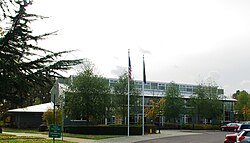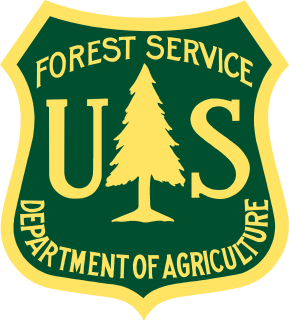
The United States Forest Service (USFS) is an agency of the U.S. Department of Agriculture that administers the nation's 154 national forests and 20 national grasslands. The Forest Service manages 193 million acres (780,000 km2) of land. Major divisions of the agency include the Chief's Office, National Forest System, State and Private Forestry, Business Operations, and Research and Development. The agency manages about 25% of federal lands and is the only major national land management agency not part of the U.S. Department of the Interior, which manages the National Park Service, the U.S. Fish and Wildlife Service, and the Bureau of Land Management.

In the United States, national forest is a classification of protected and managed federal lands. National forests are largely forest and woodland areas owned collectively by the American people through the federal government, and managed by the United States Forest Service, a division of the United States Department of Agriculture. The U.S. Forest Service is also a forestry research organization who provides financial assistance to state and local forestry industry. As of 2020, there are 154 national forests in the United States.

Forestry laws govern activities in designated forest lands, most commonly with respect to forest management and timber harvesting. Forestry laws generally adopt management policies for public forest resources, such as multiple use and sustained yield. Forest management is split between private and public management, with public forests being sovereign property of the State. Forestry laws are now considered an international affair.

The Wisconsin Department of Natural Resources (WDNR) is a government agency of the U.S. state of Wisconsin charged with conserving and managing Wisconsin's natural resources. The Wisconsin Natural Resources Board has the authority to set policy for the WDNR. The WDNR is led by the Secretary, who is appointed by the Governor of Wisconsin. The WDNR develops regulations and guidance in accordance with laws passed by the Wisconsin Legislature. It administers wildlife, fish, forests, endangered resources, air, water, waste, and other issues related to natural resources. The central office of the WDNR is located in downtown Madison, near the state capitol.

In the state of New Jersey, the New Jersey Division of Parks and Forestry is an administrative division of the New Jersey Department of Environmental Protection. In its most visible role, the Division is directly responsible for the management and operation of New Jersey's public park system which includes 42 state parks, 11 state forests, 3 recreation areas, and more than 50 historic sites and districts. However, its duties also include protecting state and private lands from wildfire, managing forests, educating the public about environmental stewardship and natural resources, as well as growing trees to maintain and restore forests in rural and urban areas, and to preserve the diversity of the trees within the forests.

The Hawaii Department of Land and Natural Resources (DLNR) is a part of the Hawaii state government dedicated to managing, administering, and exercising control over public lands, water resources and streams, ocean waters, coastal areas, minerals, and other natural resources of the State of Hawaiʻi. The mission of the Hawaiʻi Department of Land and Natural Resources is to "enhance, protect, conserve and manage Hawaiʻi's unique and limited natural, cultural and historic resources held in public trust for current and future generations of the people of Hawaiʻi nei, and its visitors, in partnership with others from the public and private sectors." The organization oversees over 1.3 million acres of land, beaches, and coastal waters and 750 miles of coastal land.
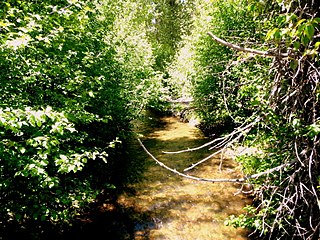
Sun Pass State Forest is one of six state forests managed by the Oregon Department of Forestry. The forest is located 40 miles (64 km) north of Klamath Falls, Oregon near the southeastern corner of Crater Lake National Park. It is the largest single block of Oregon state forestry land east of the Cascade Mountains. The forest is managed as part of the Klamath-Lake District, comprising 21,317 acres (86.27 km2) of the 33,739 state-owned acres within the district.
Private landowner assistance program (PLAP) is a class of government assistance program available throughout the U.S. for landowners interested in maintaining, developing, improving and protecting wildlife on their property. Each state provides various programs that assist landowners in agriculture, forestry and conserving wildlife habitat. This helps landowners in the practice of good land stewardship and provides multiple benefits to the environment. Some states offer technical assistance which includes:

The Oregon Board of Forestry is responsible for forest policy and oversight of forest management practices within the state of Oregon. The board appoints the state forester and oversees the Oregon Department of Forestry. The board also works with private land owners and the Federal Government to promote consistent forest management policies throughout the state.

Santiam State Forest is one of six state forests managed by the Oregon Department of Forestry. The forest is located approximately 25 miles (40 km) southeast of Salem, Oregon, and includes 47,871 acres (193.73 km2) on the western slope of the Cascade Mountains in three Oregon counties: Clackamas, Linn, and Marion. It is bounded on the east by the Willamette National Forest and Mount Hood National Forest. Silver Falls State Park is located west of the forest. The rest of the land surrounding the forest belongs to the Bureau of Land Management or is privately owned. The forest is managed as part of the Department of Forestry's North Cascade District.
The Virginia Department of Forestry (VDOF) was established in 1914 to prevent and suppress forest fires and reforest bare lands. Since its inception, the agency has grown and evolved to encompass other protection and management duties:

One of Bhutan's significant natural resources in the late twentieth century was its rich forests and natural vegetation. Bhutan's location in the eastern Himalayas, with its subtropical plains and alpine terrain, gives it more rainfall than its neighbors to the west, a factor greatly facilitating forest growth. The forests contain numerous deciduous and evergreen species, ranging from tropical hardwoods to predominantly oak and pine forests.
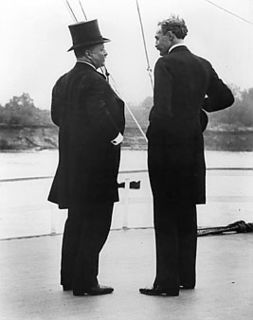
Starting in 1876, and undergoing a series of name changes, the U.S. Forest Service grew to protect and use millions of acres of forest on public land. Gifford Pinchot, an early advocate of scientific forestry, along with President Theodore Roosevelt and conservation organizations, led the effort to manage forest for the public good.
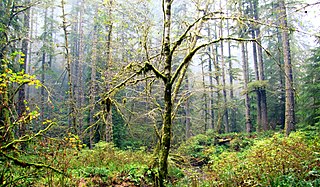
Elliott State Forest is a state forest in Coos and Douglas counties of the U.S. state of Oregon, between Coos Bay and Reedsport in the Oregon Coast Range. The first state forest established in Oregon, it is named after the state's first state forester Francis Elliott. Trees commonly found in this forest are the Douglas-fir, western hemlock, western redcedar, bigleaf maple, and red alder.
The Alabama Forestry Commission (AFC) is the forest management agency for the U.S. state of Alabama. It was created as a state agency by an act of the Alabama Legislature in 1924. Its general mission is protecting Alabama's forests from wildfire, insects, and diseases; assisting landowners practice responsible forest management on their private property; and educating the general public about the value of Alabama's forests. It established the Alabama Champion Tree Program in 1970 and continues to maintain it.

The Mississippi Forestry Commission (MFC) is a State Agency in Mississippi with headquarters in Jackson. The Forestry Commission was authorized to:
prevent, control, and extinguish forest fires; enforce laws pertaining to the protection of forests and woodlands in the state; and encourage forest and tree planting for the production of a wood crop and other beneficial purposes.
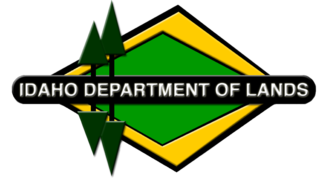
The Idaho Department of Lands (IDL) is a state-level government agency of Idaho that manages State Trust Lands. IDL oversees forestry practices on state lands and some regulation of mining practices, as well as administering forestry programs and providing fire protection and prevention on state lands. IDL operates under the Idaho State Board of Land Commissioners and is the administrative arm of the Idaho Oil and Gas Conservation Commission.

The New Hampshire Division of Forests and Lands is a government agency of the U.S. state of New Hampshire. The division "protects and promotes the values provided by trees, forests, and natural communities." Brad Simpkins is director of DHR and the State Forester. The agency's main office is located in Concord.

Frederick Erskine Olmsted, also known as Fritz Olmsted, was an American forester and one of "the founders of American forestry". He is credited with helping to establish the National Forest system in the United States and developed the system of forest management that was applied nationally. He also was a consulting forester and taught at Harvard University. With Olmsted, "Forestry was not merely a career or a business profession; it filled his whole soul and he knew how to love forestry, fight for forestry, and suffer for forestry."
